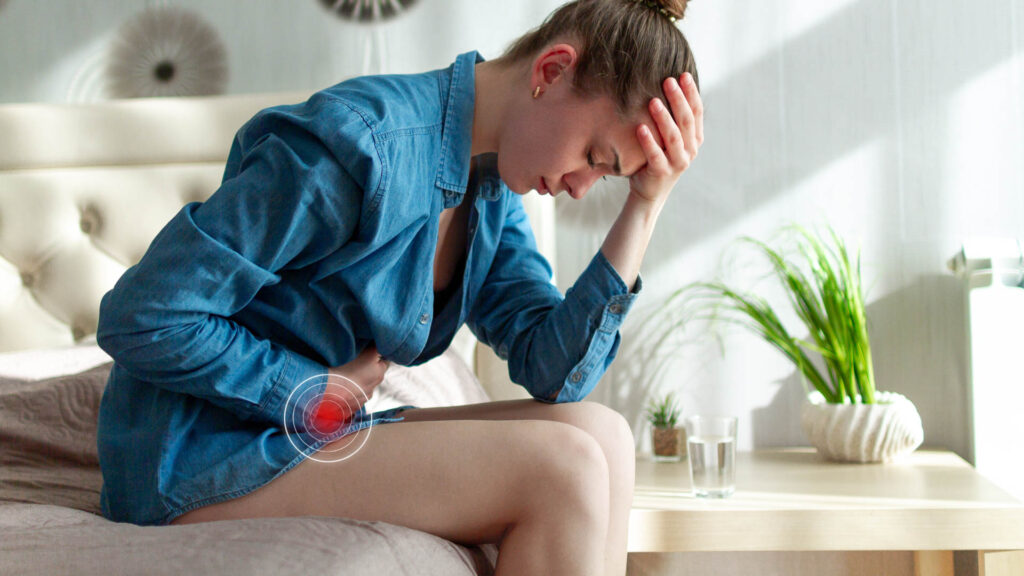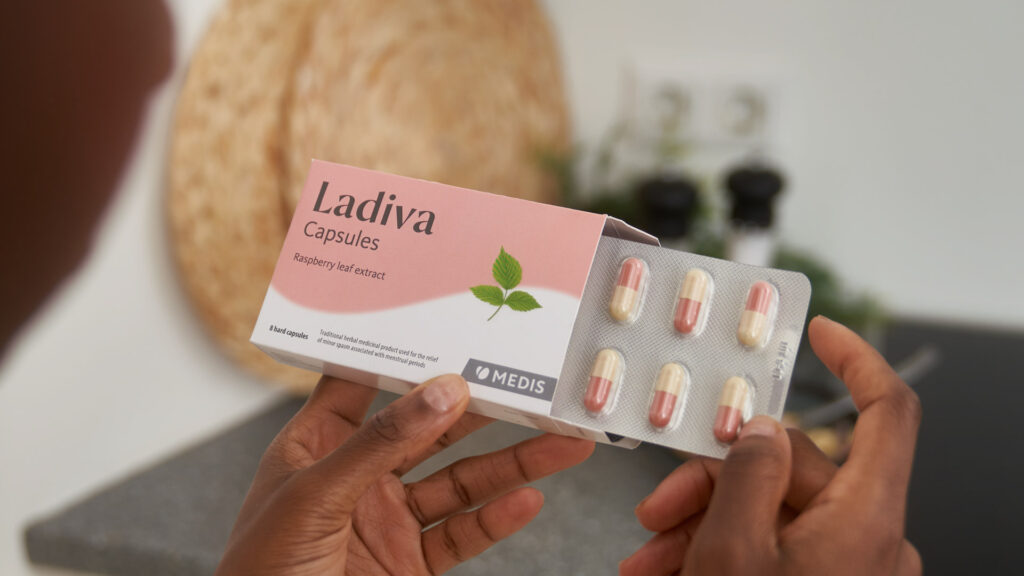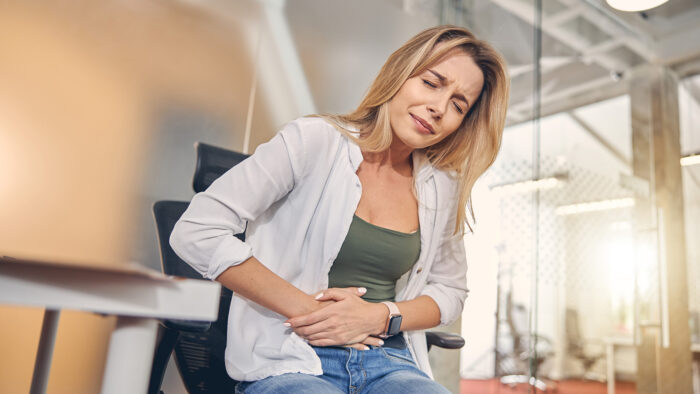Period cramps just won’t stop – what could be the problem
- READING TIME 6 MIN
- PUBLISHED October 30, 2023
- AUTHOR Donna
Key takeaways
- Cramps normally start a day or two before bleeding and they usually peak around 24 hours after the show starts.
- Experiencing cramps all through your period is considered common. Cramps certainly shouldn’t still be there after your period ends.
- If you start experiencing new pain, severe pain or pain at an unusual time, you should get that checked out.
Period cramps just won’t stop – what could be the problem
Let’s first go through the basics: during menstruation, your uterus contracts to help shed the lining – the part of the womb that would nourish the foetus if you got pregnant.
As the uterus squeezes, it also cuts off the oxygen supply to your womb. The tissues then release chemicals that trigger pain – hormone-like substances called prostaglandins. Scientists believe that higher levels of prostaglandins cause more severe menstrual cramps. 1
It may sound a bit cynical (especially if your periods are on the “shut up and just give me my painkillers” side of the spectrum), but some menstrual pain is in fact considered “normal”. The doctors call it primary dysmenorrhea.
Medically speaking, primary dysmenorrhea is not considered problematic, but – and this is important – if you worry about the pain or if it prevents you from living your life, always discuss the issue with your gynaecologist. Periods should not be debilitating.
What are “normal” cramps
Duration of your cramps is one of the tell-tale signs that you should keep an eye on. Most menstruating women+ experience mild to moderate throbbing abdominal pain two or three days of the period.
Cramps normally start a day or two before bleeding and they usually peak around 24 hours after the show starts. Some women+ report cramps that occur even earlier – 3 to 5 days earlier. This kind of pain might be associated with pre-menstrual syndrome (PMS) – the cramps tend to be lighter and primarily arise in the back.

How menstrual cramps feel really depends on the person. For some, they occur as a constant dull ache, for others as an occasional shooting pain – or anything in between. Typically, women+ feel cramps in the lower stomach, but they can also affect the groin, thighs and lower back. The pain may also radiate to your lower back and inner thighs.
Having cramps the entire time
Every woman+ has her own yardsticks for pain that she can handle but there are certain signs that you should still watch out for – they could point to a potentially more serious underlying condition.
Cramps that go on all the way through your period, for instance, are not considered typical. They certainly shouldn’t still be there after your period ends.
Keep an eye out if you never had cramps before your period but now you’re suddenly experiencing them.
Some causes of painful sex are also responsible for abnormally bad period cramps.
If cramps start to occur or worsen through the years, this is also a potential warning signal that needs to be checked out. Gynaecologists say that an underlying condition that causes abnormal cramps is often diagnosed when women+ struggle with pregnancy.
Period pain linked to an underlying medical condition also tends to affect older women+. Women+ aged 30 to 45 are most commonly affected.
What could be the problem?
There are all sorts of reasons that can cause abnormal cramps that occur outside the “normal” 1–3 days window. These conditions can range from reproductive problems to symptoms caused by contraceptives. Some of them are quick and easy to treat while others may require more extensive care.
Let’s look at the main culprits:
- Implantation cramps: some women+ experience mild to moderate cramping when a fertilized egg attaches itself to the lining of the uterus.
- Endometriosis: tissue similar to the tissue of the uterus lining grows outside of the uterus.
- Polycystic ovary syndrome (PCOS): it is caused by immature follicles which grow on the ovaries. They can cause an imbalance of hormones and, by extension, certain pain.
- Pelvic inflammatory disease: infection of the uterus, fallopian tubes or ovaries.
- Fibroids: noncancerous tumours that grow inside the uterus.
- IUD: common side effects of an intrauterine device (birth control method) may include abdominal or pelvic pain, especially with non-hormonal copper IUDs. Cramps often go away within a few months of insertion.
- Adenomyosis: tissue similar to the tissue of the uterus lining grows into the muscle wall.

- What to keep an eye on & when to visit a doctor
It can be hard to tell whether the cramps are just cramps that you’ve grown used to or whether they’re chronic. You could use these symptoms as a guideline – and a good reminder to visit a doctor if you experience any of them:
- Your cramps interfere with your daily life;
- They don’t improve when you take OTC pain medication;
- The cramps last longer than two days;
- You have cramps outside of your period;
- You notice a change in how your cramps feel over time;
- Cramps are accompanied by heavy bleeding or clotting.
Also, keep an eye on the average length of your cycle, how much you bleed during your period and anything else you may have noticed, like spotting or pain outside your period – this is all valuable information.
How to diagnose a potential disease?
The doctor will likely first review your medical history and perform a physical exam, including a pelvic exam. In some cases, they may also order a pelvic ultrasound, which may show any abnormalities. All of this will help the doctor rule out certain causes and identify the underlying source of your period pain.
Doctors also have additional tests at their disposal. They include a CT scan, which can provide a detailed view of your reproductive organs, or a gynaecologic laparoscopy, a minimally invasive surgical procedure for confirming the diagnosis of endometriosis.
Treatments
If your period pain is caused by an underlying medical condition, your treatment will depend on the condition. For example, pelvic inflammatory disease (PID) may require antibiotics to treat the infection, while fibroids may have to be surgically removed.
What you can do to ease the pain
Cramps are not exactly enjoyable, but they should not make you suffer either. You can use or take a number of things that may help you fight them. Let’s look at some of the remedies (also read our blog for an extensive research-backed list of every imaginable period pain treatment):
- Non-steroidal anti-inflammatory drugs (NSAID)
- Antispasmodic medicines such as LADIVA
- Hormonal contraceptives
- Raspberry leaf extract capsules
- Heat pads
- Certain herbs and foods
- Gentle exercise

The bottom line is this (we are probably getting a bit boring with repeating the same thing, but it’s really important): if you start experiencing new cramps, severe cramps or cramps at an unusual time, you should get that checked out. One visit to the doctor’s office could just change your life for much better.
REFERENCES
- https://www.nhs.uk/conditions/period-pain/
- https://www.nhs.uk/conditions/period-pain/
RELATED ARTICLES
Explore more
Feed your curiosity with more content. Dive deeper and explore our selected articles, curated just for you.



